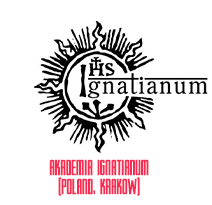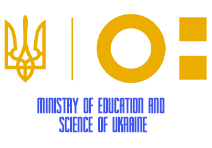ІНЖЕНЕРНО-ТЕХНІЧНА ІНТЕЛІГЕНЦІЯ УКРАЇНИ В УМОВАХ «ВЕЛИКОГО ТЕРОРУ» (НА ПРИКЛАДІ ПРЕДСТАВНИКІВ РОДИНИ КОНСТАНТИНОВСЬКИХ)
DOI:
https://doi.org/10.35433/history.11197Ключові слова:
репресії, Великий Терор, національні меншини, Євреї, інженерно-технічна інтелігенція, Григорій, Герман і Раїса КонстантиновськіАнотація
Метою запропонованої статті є дослідження долі представників інженерно-технічної інтелігенції України в умовах сталінського «Великого терору» скрізь призму персонального досвіду представників родини Константиновських. Антропологізація історії набуває все більшої популярності, що дозволяє досліджувати певні періоди і явища через персональний досвід безпосередніх учасників та очевидців. В дослідженні використовувались методи історії повсякденності в контексті вивчення особистих переживань людини (членів родини) в екстремальних умовах. Cеред інших методів – використання в якості історичного джерела усних спогадів, мемуарів представників конкретної родини. Розгляд персонального травматичного досвіду як мікроісторичного сюжету, дозволив екстраполювати його на специфіку макроісторичного рівня періоду.
В статті проаналізовано історіографію проблеми масових репресій, яка в цілому є значною. Новизною запропонованого матеріалу є зосередження уваги на представниках однієї єврейської родини – інженерів Константиновських. Характер «Великого терору» та його наслідки для України досліджується скрізь оптику долі конкретної єврейської родини інженера-будівельника.
Десятки тисяч мешканців України, зокрема євреїв, були репресовані з обвинуваченням у причетності до неіснуючих антирадянських контрреволюційних організацій. Серед стандартних обвинувачень, які висувались проти представників інженерно-технічної інтелігенції, зокрема євреїв, – шпигунство на користь Англії, Франції, Польщі та інших країн. Проти представників родини Константиновських висувались звинувачення у співпраці з «польською розвідкою» та агентами з острова Ява (Індонезія). Особливо «обтяжуючим» фактором для Григорія та Германа Константиновських стала їх безпартійність. На прикладі представників цієї родини можна прослідкувати відпрацьований та максимально спрощений механізм репресій.
Вивчення матеріалів архівно-слідчих документів, спогадів та мемуарів дає уявлення про механізми фабрикації політичних справ, форми і методи діяльності радянських спецслужб та суспільні настрої. Значна частина інженерно-технічної інтелігенції фактично виявилася в повній ізоляції. Проте, відповідальність за кількість жертв несуть не лише Й. Сталін та його оточення, а й тисячі «стукачів», активність яких «стимулювала» атмосфера страху та «війни всіх проти всіх», як невід’ємна складова тоталітарного політичного режиму.
Посилання
Bazhan, O. (2013). The reaction of the Ukrainian society to the repressive policies of the Soviet states in 1937–1938. Political repression in the Ukrainian SSR 1937–1938: research reflections and interpretations. On the 75th Anniversary of the Great Terror in the USSR: Proceedings of the All-Ukrainian Scientific Conference, 438–456. Kyiv: Institute of History of Ukraine, NAS of Ukraine. [In Ukrainian].
Bazhan, O. (2017). «We will sweep away all the enemies of the people from the face of the earth so that our Soviet Union is not polluted ...» The Great Terror in the Kyiv Region in 1937 – 1938: Mechanism, Range, Specificity, From the Archives of the VUCHK-GPU-NKVD-KGB (1) (47), 2017. http://history.org.ua.cgi-bin.eiu.history [In Ukrainian].
Bazhan, O. G., Podkur, R. Y. (Compilers) (2013). Political Repression in the Ukrainian SSR 1937–1938: Research Reflections and Interpretations. To the 75th Anniversary of the Great Terror in the USSR: Proceedings of the All-Ukrainian Scientific Conference (456 pp.). Kyiv: Institute of History of Ukraine, NAS of Ukraine. Access mode: http://history.org.ua/LiberUA /polit_repr /polit_repr.pdf [In Ukrainian].
Berenstein, L.E. (1996). Jews and political repression in the USSR (20-30s of the twentieth century). Kiev: Scientific Thought, 340. [In Ukrainian].
Bilokin, S.I. (2000). The mechanism of Bolshevik violence: Summaries of the study. Kyiv: NAS of Ukraine; Institute of History of Ukraine, 128. [In Ukrainian].
Boryak, G. (Ed.). (2015). From Ukraine to the USSR. Proceedings of the All-Ukrainian Scientific Conference on the 80th Anniversary of the Transfer of the Capital of Soviet Ukraine to the City of Kyiv. Kyiv: Institute of History of Ukraine, NAS of Ukraine, 268 p. [In Ukrainian].
Central State Archives of Public Associations of Ukraine (here and after – CSAGO of Ukraine), F. 263, Op. 1, D. 46127, L. 14.
CDAGO of Ukraine, F. 263, Op. 1, D. 46127, L. 37.
CDAGO of Ukraine, F. 263, Op. 1, D. 46127, L. 40 (1).
CDAGO of Ukraine, F. 1, Op. 20. D. 3127. L. 85
Chykalo, I. (2013). Combating «wrecking» in agriculture in the Chernihiv region in the early 1930's. Political repression in the Ukrainian SSR 1937–1938: research reflections and interpretations. On the 75th Anniversary of the Great Terror in the USSR: Proceedings of the All-Ukrainian Scientific Conference. Kyiv: Institute of History of Ukraine, NAS of Ukraine, 79-90. [In Ukrainian].
Danylenko, V, Kasianov, G, Kulchitsky, S. (1991). Stalinism in Ukraine: 20-30s. Kyiv: Lybid, 342. [In Ukrainian].
Government House of Ukraine in Kyiv. (2015). www.internetri.net /budynok-kabinetu-ministriv-ukrayiny-u/
Hecha, O. (2017). Leonid Naumovich Volynskyi and the masterpieces of the Dresden Gallery: materials of the 9th Volyn All-Ukrainian Historical and Local History Conference. Collection of scientific works, 113–116. Zhytomyr: Polissya. [In Ukrainian].
Hecha, O. (2019). The memory of Babi Yar: a universal and personal dimension (the example of the Rabinovich family). Scientific notes of Vinnytsia State Pedagogical University named after Mikhailo Kotsyubynsky. Series: History. (29), 31–38. https://doi.org/10.31652/ 2411-2143-2019-29-31-38. [In Ukrainian].
Kasianov, G. (1992). Ukrainian intelligentsia 1920 – 1930s: social portrait and historical fate. Kyiv: Globe, Age; Edmonton: Canada. Institute of Ukr. studios of Albert University, 176. [In Ukrainian].
Kostiukovich, O. (2017). 3 May 2017. Elena Kostioukovitch for “Last Address” website. His last, my first address. https://www.elkost.it/ facts/elena-kostioukovitch-for-last-address-website-03-05-17 [In Russian].
Kostiuchok, O. (2013). Government Center in Kyiv (1934 – 1937): history of construction. http://sm.etnolog.org. ua/zmist/ 2013/ 1-2/103.pdf
Kotsur, V. (1998). Historical studies: biased and objective evaluations (social changes and political processes in Ukraine in the 1920s - 1930s: historiography). Kyiv: Scientific Thought, 506. [In Ukrainian].
Rafalska, T. (2012), «The Great Terror» in Zhytomyr Region (July 1937 - November 1938). Zhytomyr: Volyn Publishing House, 180. [In Ukrainian].
Raisa`s Memories. (2015). Leonid Naumovich Volynsky. Life and creativity. http: zwinger.it/ [In Russian].
Sirochenko, G. (2011). Historiography of political repression of the 20-30's of the XX century on the territory of Ukraine through the prism of historical works of the Soviet period (1920 –1991). Gilea: a scientific bulletin: a collection of scientific works (Issue 44 (2)), Kyiv, 219-225. [In Ukrainian].
Slipushchenko, S. (2014). Repression against the engineering and technical intelligentsia of southern Ukraine during the formation of the totalitarian system (first half of the 1920s). Traveler (5), 24-28. http://nbuv.gov.ua/UJRN/ Mandriv_2014 _5_7.
Smolii, V. (ed.). (2002). Political Terror and Terrorism in Ukraine in the Nineteenth and Twentieth Centuries: Historical Essays. Kyiv: Scientific Thought, 400-401. [In Ukrainian].
Shapoval, Yu. (2007). Ukraine in the Great Terror era: stages, features, consequences.
«Yezhov times» begins. From the archives of VUCHK-GPU-NKVD-KGB (28), 76-100. http://resource. history.org.ua/ publ/ gpu_ 2007_28_1_76. [In Ukrainian].
Shapoval, Yu. (2001). Twentieth Century Ukraine: Persons and Events in the Context of a Difficult History. Kyiv: Genesis, 557. [In Ukrainian].
Vasilyev, V. (2004). Influence of the "Great Terror" of 1937 - 1938 on economic processes in the USSR. From the archives of VUCHK-GPU-NKVD-KGB, 22, 33–58. http://resource.history.org.ua/publ /gpu _2004 _22 _1 _35. [In Ukrainian].
Vasylchuk, G. (2008). Soviet Ukraine of the 20-30s of the 20th Century: Contemporary Historiographical Discourse. Zaporozhye: Zaporizhzhya National University, 314. [In Ukrainian].
Vengerska, V. (2018). Anti-Semitism and its impact on the memory of victims of undemocratic political regimes. Materials of III-VI All-Ukrainian Scientific-Practical Conferences “Memory Policy in Theoretical and Practical Dimensions” (Rivne, 2016–2019). – Rivne, 59-64. [In Ukrainian].
Vronska, T. (2013). Mechanisms of deliberate marginalization in the context of state terror in Ukraine (1917 – 1953). Political repression in the Ukrainian SSR 1937 – 1938: research reflections and interpretations. On the 75th Anniversary of the Great Terror in the USSR: Proceedings of the All-Ukrainian Scientific Conference (pp. 107–128). Kyiv: Institute of History of Ukraine, NAS of Ukraine. [In Ukrainian].
Yunge, M., Binner, R. (2003). How terror became «Big». Secret Order No. 00447 and technology for its execution. Moscow: AIRO-XX, 352 p. [In Russian].
##submission.downloads##
Номер
Розділ
Ліцензія
Авторське право (c) 2019 Olena Gecha

Ця робота ліцензується відповідно до Creative Commons Attribution 4.0 International License.
Автори, які публікуються у цьому журналі, погоджуються з наступними умовами:
Автори залишають за собою право на авторство своєї роботи та передають журналу право першої публікації цієї роботи на умовах ліцензії Creative Commons Attribution License, котра дозволяє іншим особам вільно розповсюджувати опубліковану роботу з обов'язковим посиланням на авторів оригінальної роботи та першу публікацію роботи у цьому журналі.
Автори мають право укладати самостійні додаткові угоди щодо неексклюзивного розповсюдження роботи у тому вигляді, в якому вона була опублікована цим журналом (наприклад, розміщувати роботу в електронному сховищі установи або публікувати у складі монографії), за умови збереження посилання на першу публікацію роботи у цьому журналі.
Політика журналу дозволяє і заохочує розміщення авторами в мережі Інтернет (наприклад, у сховищах установ або на особистих веб-сайтах) рукопису роботи, як до подання цього рукопису до редакції, так і під час його редакційного опрацювання, оскільки це сприяє виникненню продуктивної наукової дискусії та позитивно позначається на оперативності та динаміці цитування опублікованої роботи (див. The Effect of Open Access).














